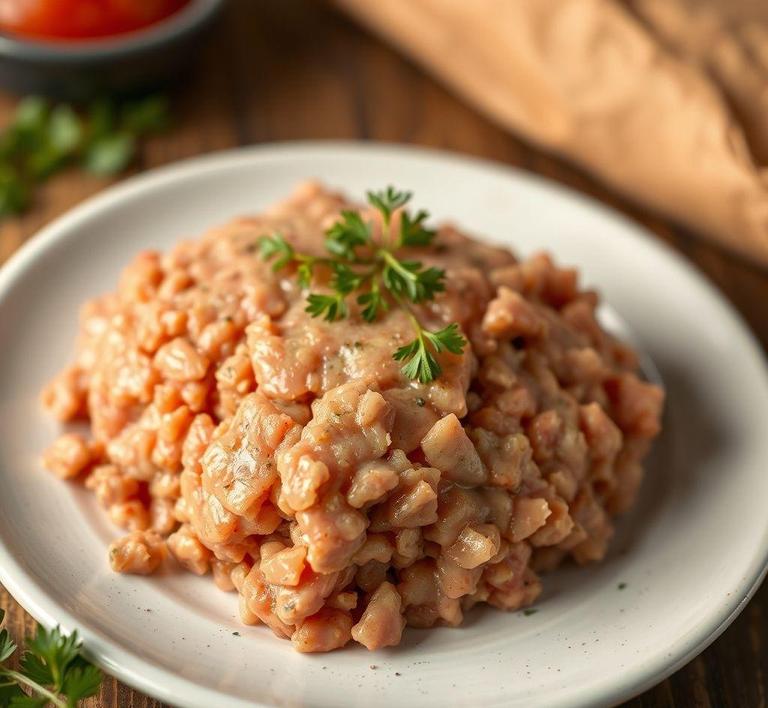When it comes to handling ground turkey, many people wonder whether it’s safe to refreeze it after it’s been thawed. While the process might seem a bit tricky, it’s definitely possible as long as certain guidelines are followed. Refreezing ground turkey meat can help you avoid food waste and stretch your grocery budget, but it’s important to know the right way to do it to ensure the meat stays safe and tasty. This guide will walk you through the proper steps and tips on how to refreeze ground turkey meat without compromising its quality or safety, so you can make the most of your frozen stock and enjoy stress-free meals.
Can You Refreeze Ground Turkey Meat?

Refreezing ground turkey meat is a topic that often generates confusion among home cooks, especially when it comes to food safety and preserving the quality of the meat. Technically, yes, you can refreeze ground turkey, but it is essential to follow certain guidelines to ensure that the process is safe and the meat remains edible. The primary concern when refreezing ground turkey is the potential for bacterial growth during thawing and refreezing, which can lead to foodborne illness.
When ground turkey is initially frozen, it forms ice crystals that help preserve its freshness. However, once it has been thawed, its temperature enters the "danger zone"-between 40°F and 140°F-where bacteria multiply rapidly. Refreezing ground turkey after it has been thawed can cause this bacterial growth to continue, leading to the potential for contamination. To avoid this risk, it is crucial to properly thaw the meat, monitor its temperature, and make sure that you refreeze it within a short window of time, ideally no more than a day or two after thawing.
How To Refreeze Ground Turkey Meat?
Refreezing ground turkey meat isn’t as straightforward as just throwing it back into the freezer after it has been thawed. There are specific steps you must follow to ensure that the meat stays safe and doesn’t lose its quality.
- Thaw the Meat Safely: If you’ve already thawed the ground turkey, it’s essential to do so in the refrigerator rather than at room temperature. Thawing in the fridge helps maintain a consistent cold temperature, preventing the meat from entering the danger zone for bacteria growth. Avoid thawing at room temperature, as this can cause the meat to warm too quickly and become a breeding ground for pathogens.
- Inspect the Meat: Before you even think about refreezing the ground turkey, it’s important to check its freshness. If the meat smells sour, slimy, or has changed color significantly, it’s best to discard it. If the turkey has been thawed in the fridge and has not been left out for more than 2 hours at room temperature, it should be safe to refreeze.
- Separate Into Smaller Portions: If you’ve thawed a large amount of ground turkey, consider separating it into smaller portions before refreezing. This will help ensure that you only thaw the portion you need each time, reducing the number of times the turkey is exposed to temperature changes.
- Wrap and Seal Properly: To avoid freezer burn and preserve the quality of the ground turkey, wrap it tightly in plastic wrap, aluminum foil, or a freezer-safe bag. Make sure all air is removed from the packaging to prevent freezer burn, which can affect texture and flavor.
- Label and Date: It’s always a good idea to label the packages with the date of refreezing. Ground turkey should ideally be used within 3-4 months after refreezing for optimal flavor and texture.
- Refreeze Within 24 Hours: While it’s generally best to refreeze ground turkey as quickly as possible, you should do so within 24 hours of thawing. The longer the meat sits out or remains in the fridge, the greater the risk of bacterial growth.
Quality Impact
While it is possible to refreeze ground turkey meat, there can be significant impacts on its texture, flavor, and overall quality. The process of freezing and thawing breaks down the cell structure of the meat, causing moisture loss. When you refreeze the meat, this moisture loss becomes even more pronounced, which can result in a less juicy, drier, and tougher texture once the meat is cooked.
Ground turkey is naturally lean, so its texture is more delicate than fattier meats like beef. As a result, the impact of freezing and refreezing can be more noticeable. After refreezing, ground turkey may lose its tenderness, becoming somewhat grainy or crumbly when cooked. The flavor could also be affected, with some loss of freshness or a slightly "stale" taste.
Additionally, repeated freezing and thawing cycles may lead to a higher risk of freezer burn, which occurs when the meat is exposed to air in the freezer. Freezer burn can result in discoloration and an unpleasant taste, further diminishing the eating experience.
If you are planning to refreeze ground turkey, it’s essential to set your expectations accordingly. While refrozen turkey may still be perfectly safe to eat, it may not have the same texture and flavor that freshly frozen ground turkey would offer. It’s usually better for dishes where the meat will be mixed with sauces, soups, or casseroles, where the slight changes in texture may be less noticeable.
Refreezing ground turkey meat is certainly possible, but it’s not without its risks and quality considerations. While it remains safe to refreeze ground turkey as long as it has been properly thawed and handled, doing so will likely have an impact on the meat’s texture and flavor. To minimize these negative effects, it’s crucial to follow the proper steps for thawing, storing, and refreezing, and always be mindful of the meat’s condition before you decide to freeze it again. The key takeaway is that while refrozen ground turkey is safe to eat in most cases, it’s best consumed sooner rather than later, and ideally in dishes where texture and flavor are less critical.
Is It Safe To Refreeze Ground Turkey Meat?
Refreezing ground turkey meat is a topic that often raises questions among home cooks, food enthusiasts, and even seasoned chefs. The safety of refreezing ground turkey primarily depends on how it’s handled throughout its lifecycle from store to table. In short, yes, it is possible to refreeze ground turkey meat, but the process must be carried out with care to ensure both safety and quality.
When ground turkey is thawed, it enters the ‘danger zone’ for bacteria growth, which is between 40°F and 140°F (4°C and 60°C). If the meat has been thawed in the refrigerator and has not been left out at room temperature for more than two hours, it is generally safe to refreeze it. However, keep in mind that each freeze-thaw cycle can compromise the texture, flavor, and moisture content of the meat. The more you freeze and thaw it, the less desirable the end product becomes.
The Key Factor: Time
When considering whether to refreeze ground turkey, the amount of time it spends outside the freezer is crucial. If it’s been left out at room temperature for too long (over two hours, or one hour if the ambient temperature is above 90°F), it’s no longer safe to refreeze. In such cases, bacteria like Salmonella or Escherichia coli (E. coli) can multiply rapidly, making the meat unsafe to consume. If it has been safely thawed in the fridge, however, the meat can generally be refrozen without issue, provided it hasn’t been in the danger zone for more than two hours.
Signs That Ground Turkey Meat Should Not Be Refrozen
There are several telltale signs that ground turkey has passed the point of being safe for refreezing or consumption. Recognizing these signs is vital in preventing foodborne illness and ensuring the best possible outcome for your meals.
- Off Odor: Fresh ground turkey has a mild, slightly sweet scent. If it emits a sour, pungent, or off-putting smell, it has likely gone bad and should be discarded. A strong, unpleasant odor indicates bacterial growth or spoilage, which means it’s not safe to refreeze or eat.
- Slimy Texture: Fresh turkey should feel firm and slightly moist but not slimy or sticky. If the ground turkey feels sticky, slimy, or overly tacky, it has begun to break down due to bacterial activity, and refreezing it would not only be unsafe but would also render it inedible.
- Discoloration: While some color changes are normal in frozen meats, ground turkey that has turned from its natural pinkish color to a grayish hue or greenish tint has likely spoiled. Freezing does not prevent oxidation or bacterial growth, so any discoloration indicates it’s no longer safe to eat.
- Thawing on the Counter for Too Long: If ground turkey has been left out on the counter for more than two hours, it enters the temperature danger zone, where bacteria can multiply quickly. Even if it looks and smells fine, it’s best to err on the side of caution and discard it, rather than risking foodborne illness.
Common Refreezing Mistakes
There are a number of common mistakes that people make when refreezing ground turkey. While these may seem like small oversights, they can significantly affect the safety and quality of the meat.
- Refreezing After a Long Thaw at Room Temperature: One of the biggest mistakes is allowing ground turkey to thaw at room temperature for too long before attempting to refreeze it. As mentioned earlier, leaving meat out for more than two hours provides an ideal environment for harmful bacteria to grow. Even if the turkey looks fine afterward, it could still pose a risk to your health.
- Not Properly Sealing the Meat: Refreezing ground turkey without properly sealing it is another common mistake. Exposure to air can cause freezer burn, which doesn’t make the meat unsafe, but it does degrade the quality of the texture and flavor. Always use airtight packaging, like vacuum-sealed bags or freezer-safe zip-top bags, to minimize air exposure.
- Multiple Freeze-Thaw Cycles: Continuously freezing and thawing ground turkey diminishes its texture and flavor with every cycle. Each time the meat is thawed, the moisture within it can escape, resulting in a drier, tougher texture when cooked. Ideally, ground turkey should only be thawed once-so refreezing it more than once can negatively impact the overall eating experience.
- Refreezing Leftover Cooked Turkey: If you’ve cooked ground turkey and then freeze it, you can safely refreeze it if it has been handled properly. However, if cooked turkey has been left at room temperature for too long or hasn’t been refrigerated promptly, it should not be refrozen, as the same bacteria concerns apply. Always cool cooked meat quickly and store it properly before freezing.
Tips And Tricks
To help ensure your ground turkey remains safe to eat after being frozen and thawed, here are some handy tips and tricks:
- Freeze Quickly: When you first purchase ground turkey, freeze it as soon as possible if you don’t plan on using it within a couple of days. The quicker you freeze it, the better the quality will be after thawing, especially if you plan to refreeze it.
- Use a Meat Thermometer: To ensure that your ground turkey has been cooked properly after thawing and refreezing, use a meat thermometer to check for doneness. Turkey should reach an internal temperature of 165°F (74°C) to ensure all harmful bacteria have been killed.
- Label and Date Your Packages: It’s always a good idea to label your meat with the date it was frozen. This helps you keep track of how long it’s been in the freezer, ensuring that it doesn’t sit too long and lose its quality. Ideally, ground turkey should be consumed within 3-4 months of freezing for optimal flavor and texture.
- Thaw Properly: When thawing ground turkey, always opt for the refrigerator method. This ensures that the meat stays at a safe temperature while thawing. If you need to thaw it quickly, use the microwave or a cold water bath-just be sure to cook it immediately after thawing.
- Pre-portion Before Freezing: If you know you’ll only need a portion of the ground turkey at a time, divide it into smaller, meal-sized portions before freezing. This way, you only need to thaw what you’ll use, which reduces the need for refreezing.
Conclusion
Refreezing ground turkey meat is certainly safe, but it comes with important considerations that directly affect both safety and quality. The key factors are handling the meat properly during thawing and ensuring that it hasn’t spent too much time in the temperature danger zone. Understanding how to recognize spoilage, avoiding common mistakes like improperly sealing the meat, and following best practices for freezing and thawing will help you maximize the safety and quality of your ground turkey.
If handled correctly, refreezing ground turkey can be a practical way to reduce food waste and extend its shelf life. However, frequent freezing and thawing should be avoided to preserve both flavor and texture. By following the tips and guidelines shared above, you can safely and confidently store and refreeze your ground turkey, making sure it remains both delicious and safe to eat.

